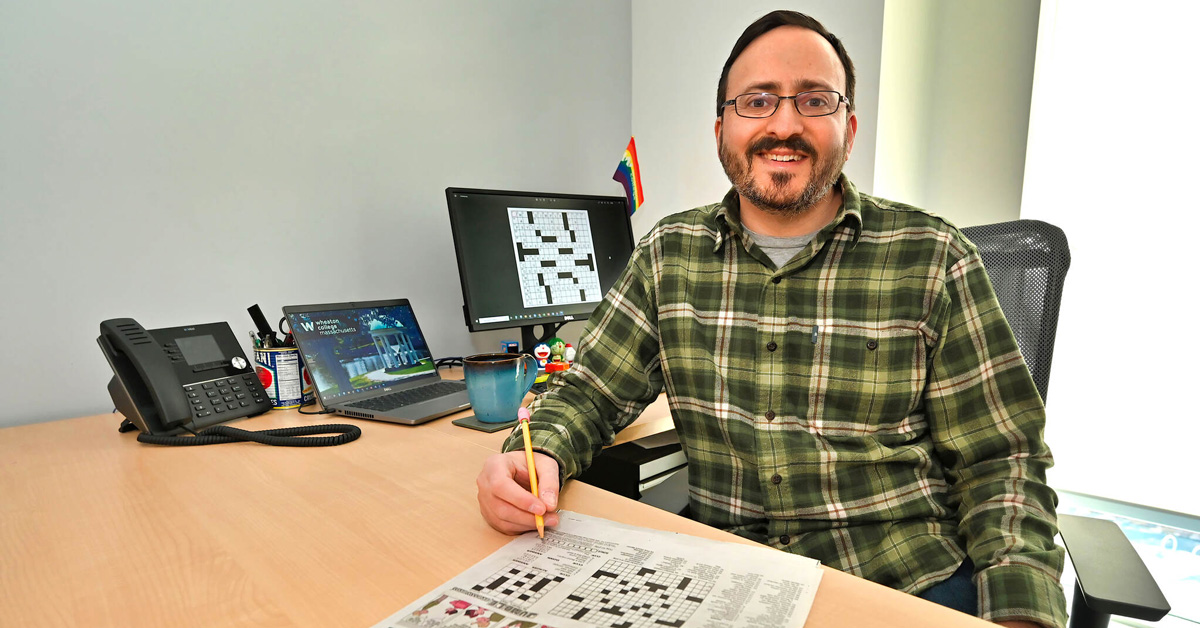Professor’s pandemic pastime featured in New York Times
 Wheaton faculty member’s published crossword puzzles tap into long-held passion
Wheaton faculty member’s published crossword puzzles tap into long-held passion
As the COVID-19 pandemic held us all in place for a bit, many took up new hobbies and renewed old ones to fill the time. Wheaton College Professor of Psychology Michael Berg returned to a love he developed when he was an undergraduate: crossword puzzles. Only this time, he began creating his own, drawing on skills he learned from a puzzle construction course he took—29 years ago.
He has become so good at it that several of his crossword puzzles have been published in The Boston Globe and, most recently, in The New York Times on March 15. The NYT Word Play column “Partner of Dreams: Michael B. Berg makes his New York Times Crossword debut” introduced the professor and his puzzle. The source of the inspiration for the questions and answers was the video games he has played. (Note: A subscription is required to access the puzzle.)
“During the pandemic I began corresponding with a close friend as we each worked on The New York Times puzzle each day. After several weeks of this, he suggested that we should start making puzzles, which awakened my interest,” he said. “There are some good sources online and community groups that give encouragement. And there is specialized software that I learned how to use. It has been a fun ‘pandemic hobby’ that has really stuck with me.”
Berg notes that the biggest challenge in creating crosswords is symmetry—all theme answers need to be in even length pairs, for the most part. But he loves rising to meet the challenge.
“The New York Times puzzle is the real coup,” he said. “They now accept less than 2% of the puzzles submitted to them, and there are estimates that a million or more people do the crossword every day.”
As a professor, Berg’s scholarship focuses on applying social psychological theory to public health outcomes, with a particular focus on social inequality and traditionally underserved populations. Puzzle-making is not too far afield from his work, he said.
“One thing I’ve thought about a lot is how similar the process is between creating a crossword puzzle and a research project,” Berg said. “In both cases, you need a strong central idea or the project won’t get off the ground. From there, you have to do some research to see what’s been done before and how your puzzle or research paper will be uniquely valuable. Then you follow a specific method, step by step, until you have your finished project.
“Even the publishing of crosswords and research papers holds parallels. You submit them to a publication, get feedback from the editors, revise the work, and then resubmit, continuing that cycle until it’s accepted.”

 Wheaton faculty member’s published crossword puzzles tap into long-held passion
Wheaton faculty member’s published crossword puzzles tap into long-held passion